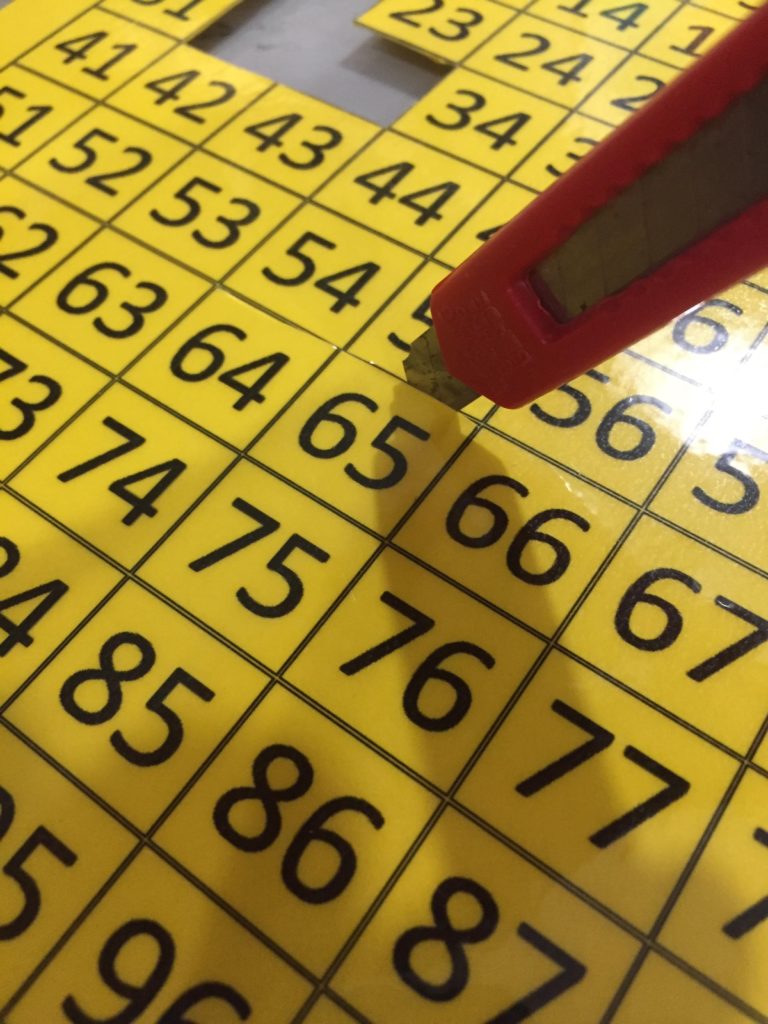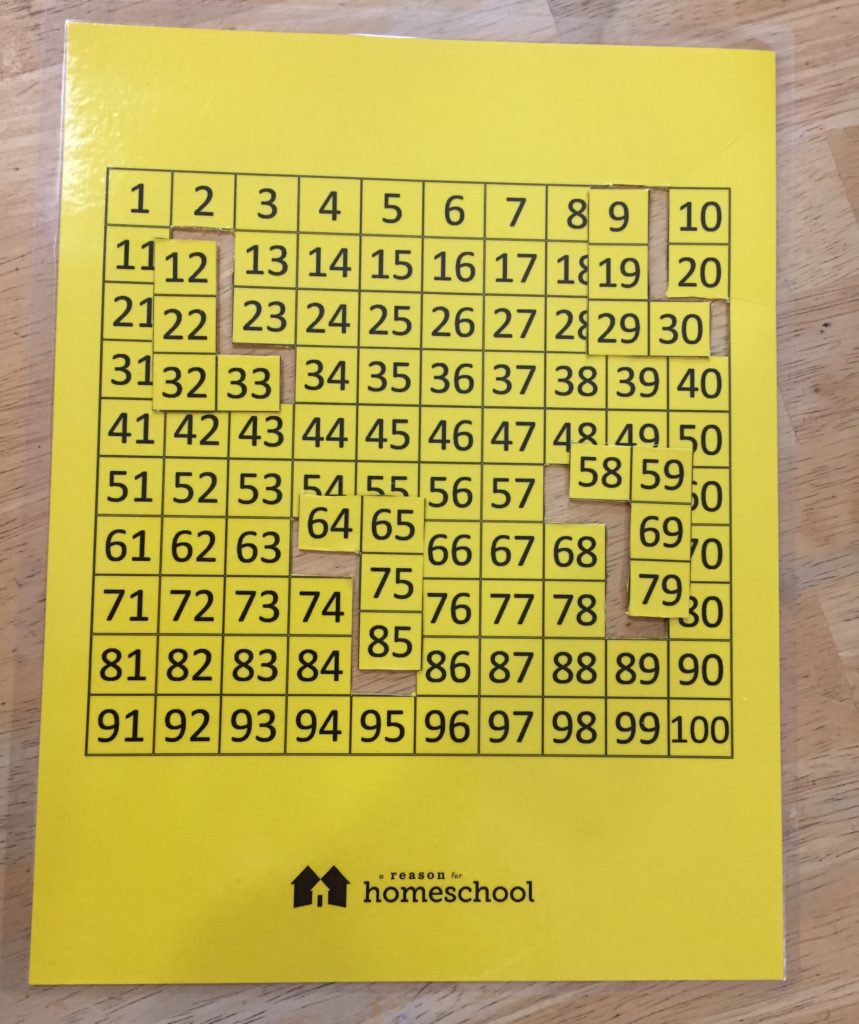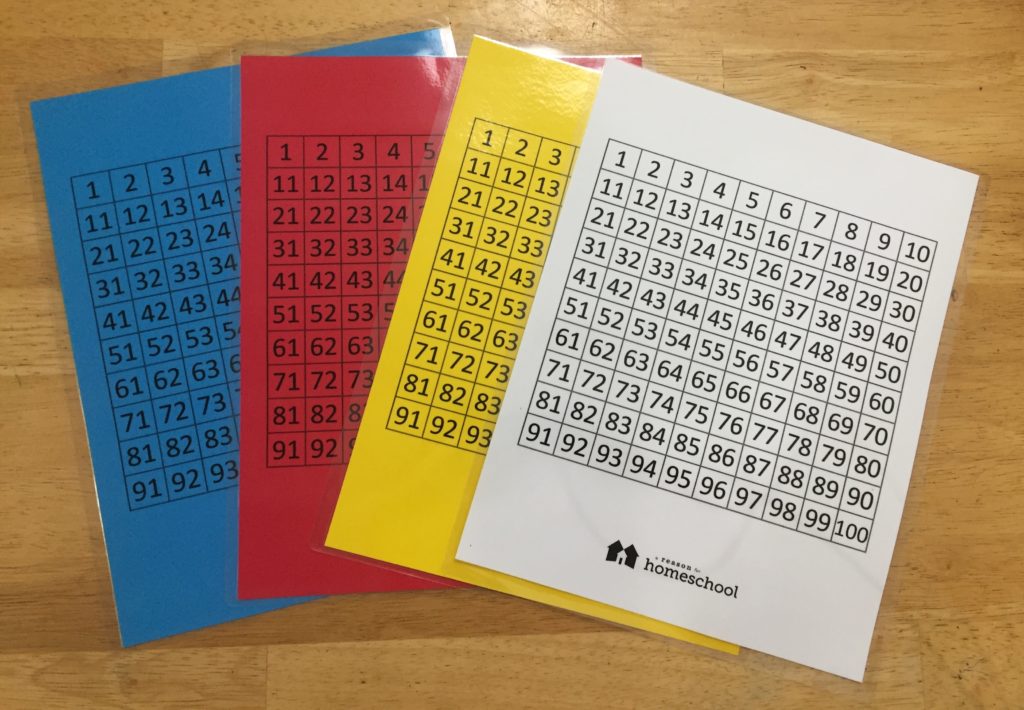Mastering numbers forms the backbone of our children’s mathematics education. Before they can do much with those numbers, though, they have to learn how they all work together. Without an understanding how the value of the numbers gets progressively greater as we count along, they don’t have much meaning.
Early in my homeschooling journey, a fellow Montessori-loving teacher showed me this fun little hundreds chart match-up game. It’s simple to make and play, but it packs a great educational punch, as well.
Basically, it’s a hundreds chart with missing number groups the child has to match back into proper place. When they are finished, you could say (or sing!) the numbers out loud together, checking if they are correct as you go along, or you can create a printed answer key to compare it to.
If you want a super-easy check sheet, a transparency can easily be placed on top of the finished puzzle, allowing you to immediately see anything misplaced. Many copiers—even home 3-in-1 kinds—can make transparencies quite easily. (Check out these transparency DIY instructions.) Please check your user manual to know if this is something your machine can do, though … I’d hate for you to melt plastic in yours, trying to make something it’s not designed to do. If yours isn’t capable (or you just don’t want to mess with making your own), a local graphics or copy store will be able to assist you.
A very lightweight sheet of paper—something in the range of 16-18 lb. weight—might do the trick for printing a check sheet, as well.
Here’s all you do:
1. Download our free black and white Hundreds Chart, and print it on whatever color paper you like. You may choose to laminate it or use card stock to make it more durable.
2. Placing it onto something you don’t mind cutting on (cardboard or old magazines will work well), use a razor blade to cut number chunks from the chart.  This step offers you several options. According to your child’s ability, you may choose to:
This step offers you several options. According to your child’s ability, you may choose to:
— cut shapes that look identical to make it a little more difficult (he actually has to know the numbers and can’t just match up shapes), or
— make each cutout different, therefore making it easier to identify correct placement.
3. Check the placement of the cut-outs for accuracy.

I like to do several charts in different colors simply for the aesthetic appeal, but for a more advanced student, you could do a couple of the same color, cut out different numbers on each one, and mix up the pieces to be matched back into both charts, also.
That’s it! A simple project … and your child is on her way to becoming an elementary mathematics genius.
Download your copy of our FREE printable Hundreds Chart here:
Printable Hundreds Chart (for Match-Up Games)
You may be asked to enter your email address if we don’t recognize you as a current subscriber.
Once you have, you can simply return to this page to download the file!
